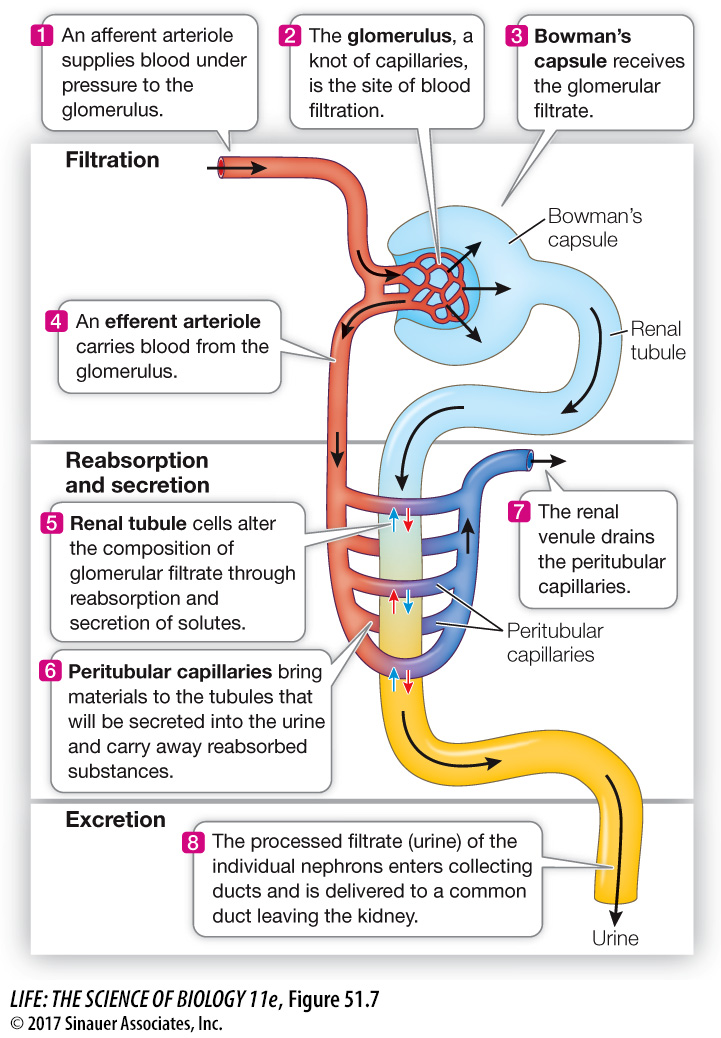The nephron is the functional unit of the vertebrate kidney
Urine formation in vertebrate nephrons involves three main processes (Figure 51.7):

Activity 51.2 The Vertebrate Nephron
www.life11e.com/
1101
Filtration. Each nephron has a dense bed of capillaries called a glomerulus (plural glomeruli). The glomerulus is highly permeable to water, ions, and small molecules but impermeable to large molecules. Blood pressure drives the movement of water and small-
molecular- weight solutes out of the glomerular capillaries. Tubular reabsorption. The filtrate from the glomerulus flows into the renal tubule. Cells in the renal tubule modify the filtrate by reabsorbing specific ions, nutrients, and water, returning these to the blood, and leaving behind and concentrating excess ions and waste products such as urea.
Tubular secretion. The filtrate in the renal tubule is further modified by tubule cells transporting substances into the tubule. These are substances that the body needs to excrete.
Blood enters the glomerular capillaries via an afferent arteriole and leaves the glomerulus in an efferent arteriole. This short vessel is called an arteriole because it feeds another capillary bed, called the peritubular capillaries. These capillaries intimately surround the renal tubules and deliver substances to the renal tubules that the cells of the tubules secrete into the urine. The peritubular capillaries also carry away substances that the tubule cells reabsorb from the urine.